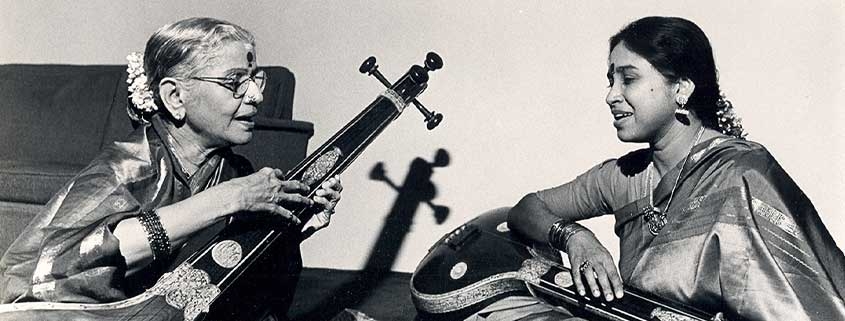MS Amma was not only a bhakti-oriented musician but also one who had her basic techniques right. In Tamil parlance, her method could be called “sariyaana vazhi”. What was the foundation behind this “sariyaana vazhi?” one is tempted to ask. That MS Amma was a naturally gifted Carnatic musician who had the right inputs very early is evident even in her classical film songs in the movies Savitri, Sakunthalai and Meera. I have always been a fan of her virutham “Manam Kulira” in Sakuntalai. Panthuvarali, Mohanam and Dhanyasi feature in that virutham and are very essences. The brighas, karvais and glides effortlessly slide into one another in the phrases, giving a feel of seamlessness. The sahitya is perfectly balanced. The virutham does not sound like one undertaken by a young musician because it has been rendered with the maturity of a very senior artiste.
In MS Amma’s raga alapana of Sankarabharanam, the sangathis, logically arranged from a broad base, would culminate in a crescendo in the upper octave with tara sthayi gandharam as the platform. A key swara for this raga, tara sthayi gandharam, articulated perfectly and with sruti suddham, would always make things easy. Brigas and akarams would then be fired like salvos from that pedestal and tara panchamam would be reached with minimum effort. One area that calls for laboured effort in Sankarabharanam is the Madhya sthayi pancamam to Tara shadjam. M S Amma would seldom dwell on that region for long and often would proceed to the shadjam in a jiffy.
In neraval, MS Amma would always sing the first round in the important swara of the raga of the kriti being rendered. For example, in “Rama Nannu Brovara,” she would perform the neraval in “Meppula kai kannathavu.” The notation for the line in the kriti starts with “pa pa pa da ni sa”… She would start the first round of the neraval in “da da da da…ni da..” since “da” is the important swara for that raga (Harikambhoji) rather than the panchama. This choice would make improvising in keezhkalam (first speed) easy, as also madhyama kalam (double speed), creating a brisk tempo.
MS Amma would always give an impression of cautious treading when it came to the realm of swaraprasthara. That is because she never saw swaras as distinct notes with which to perform endless permutations. She saw the raga as a whole in select combinations of swaras and diligently verified the permutation in her mind—that is, whether the combination represented the full flavour of the raga—before actually singing it with complete anuswarams and jaarus. She practised strict quality control even with her rarely used korvais or subtle kanakkus in pieces such as Koluvamaregadha and RTPs. MS Amma was a celestial being, born to sing and blaze the ideal trail in Carnatic Music.



